The Archive and Its Double
If every archive is determined by and subject to a process of multiple reflections – ranging from the binary relationship between the authentic and its possible reproductions, to the well-tempered generation of a number of copies referring to a certain ‘original’; from the games of reversal, distortion, and transmissivity entailed in a digitization venture to the interaction between the institution and the user – the “mirroring” qualities of Vilém Flusser’s archive prompt us to follow the reasoning of duplicity in approaching the legacy of this key media thinker; whether this is manifested as an institution, a physical or digital collection of documents, or a stream of influential ideas and concepts.
Established in 2012, and following an agreement between Pontifícia Católica de São Paulo (PUC-SP) and Berlin University of the Arts, the archive hosted at the Center for Interdisciplinary Research in Semiotics of Culture and Media (CISC) in Brazil keeps entirely digital copies of Flusser’s typescripts and correspondences, whose “originals” are kept in Germany, in the Historical Archive of the City of Cologne and the Berlin University of the Arts. This “medium-dispersive meshwork of originals, photocopies and digital representations” comprising a ‘non-linear,’ ‘dynamic,’ and ‘accrued’ constellation (Jóri and Schindler 2017, 2), not only performs the philosopher’s own migrant genealogy, but also invites its visitor to engage with the archive through a migratory, non-linear pathway.
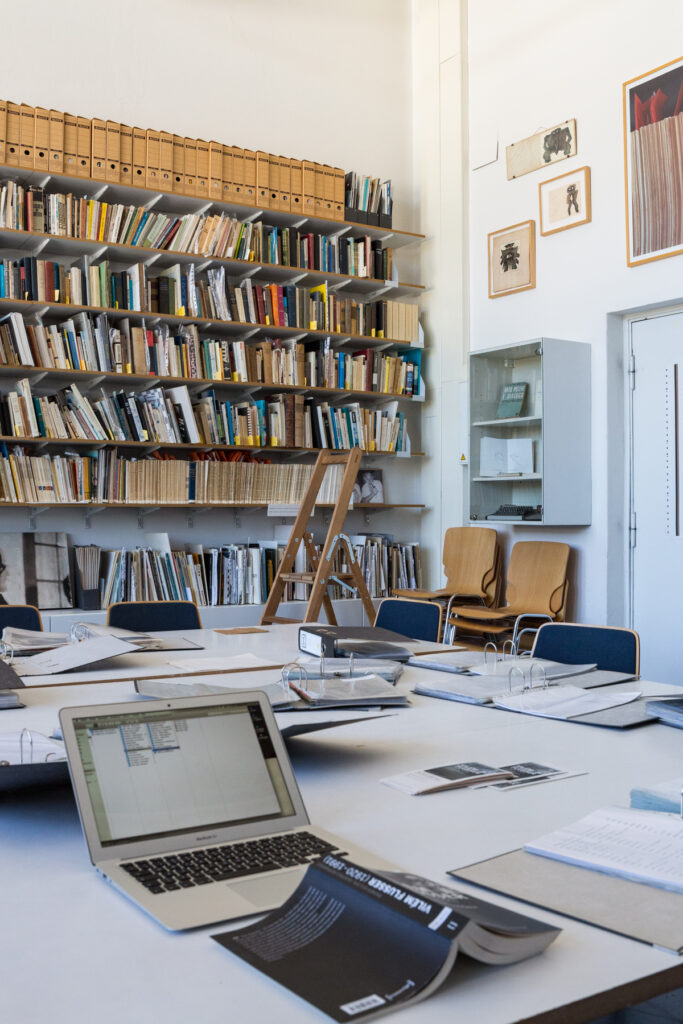
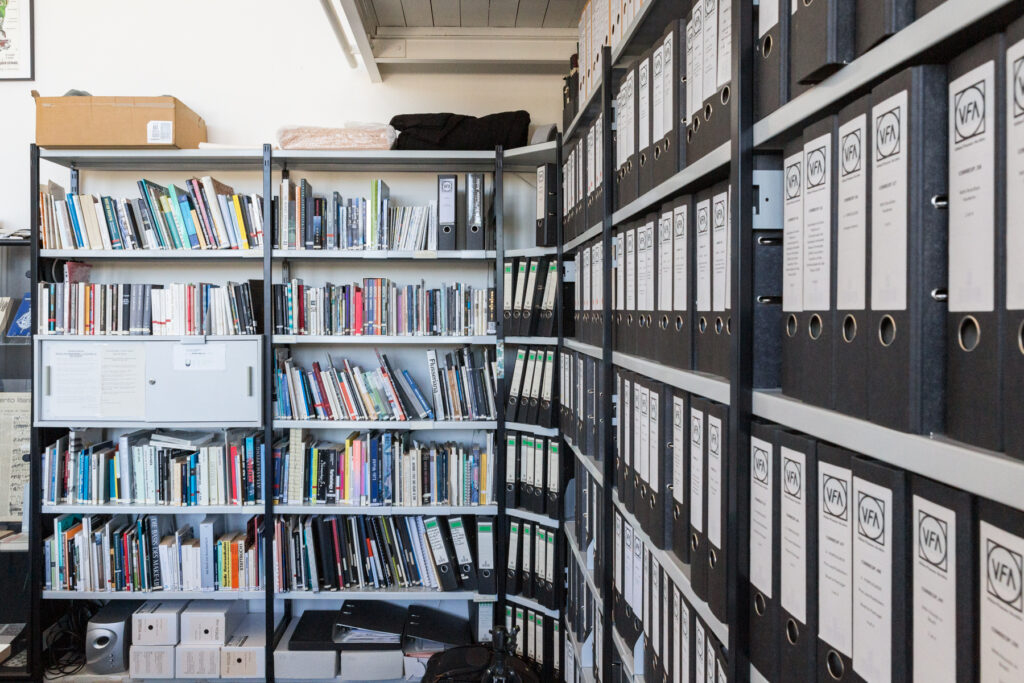
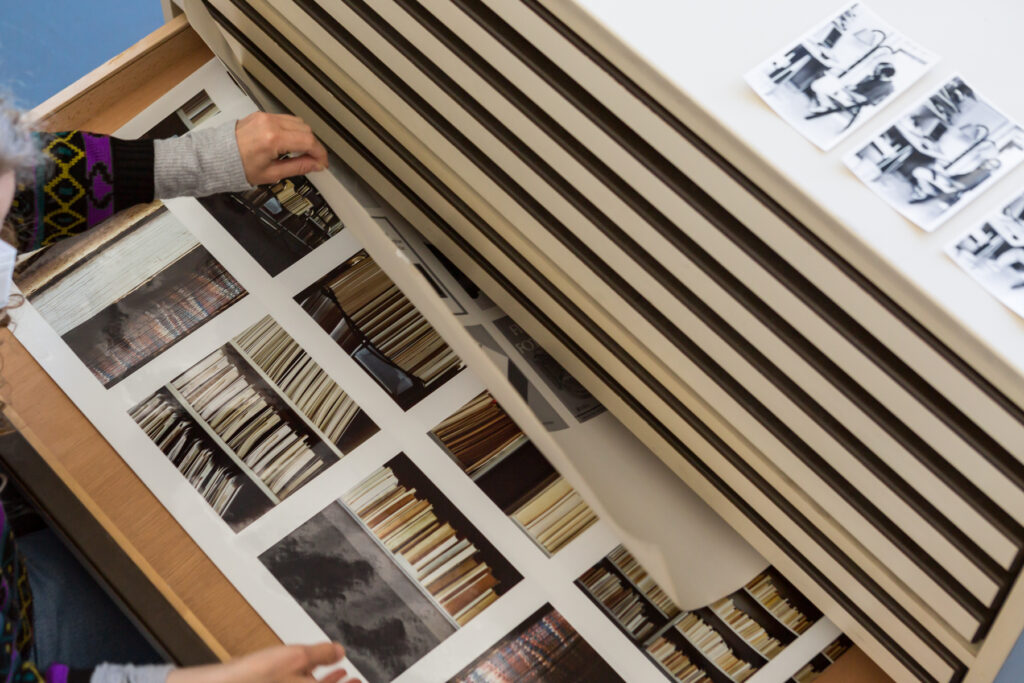
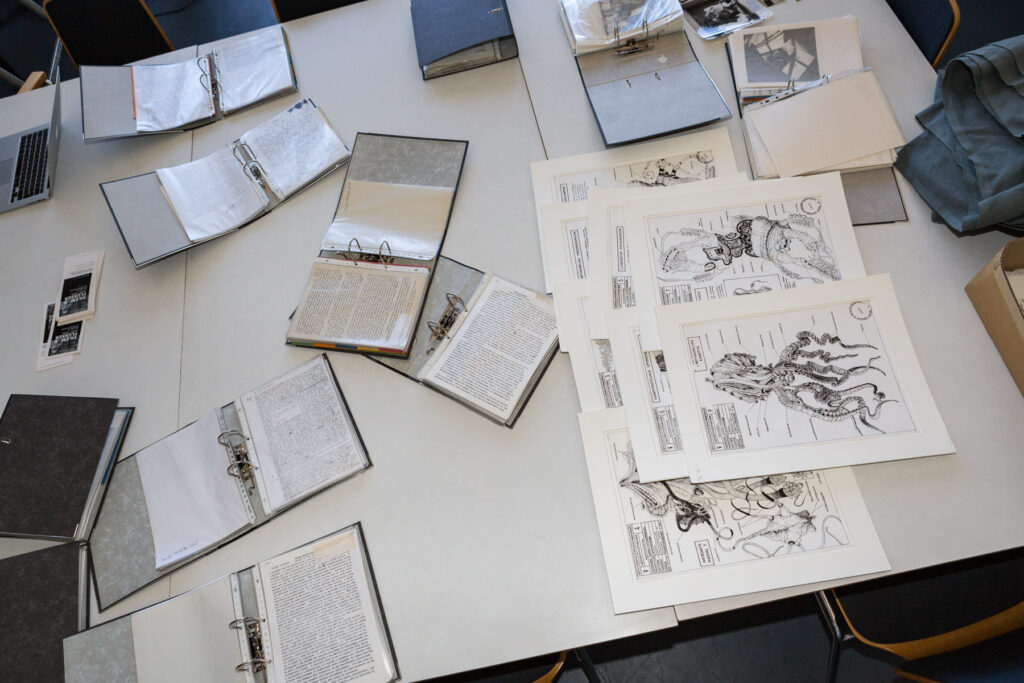
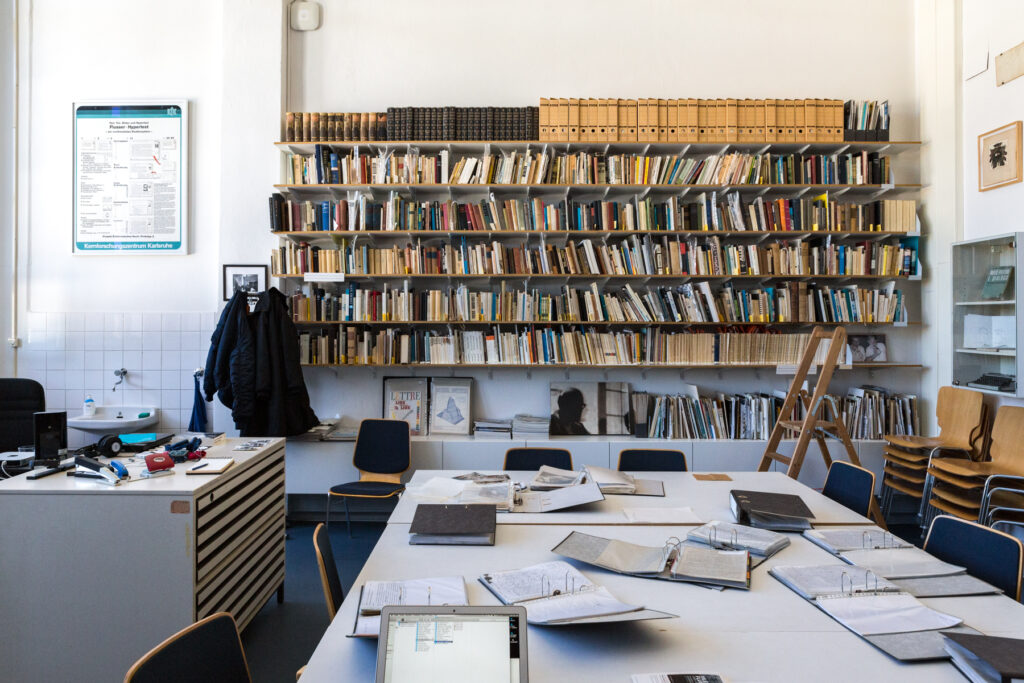
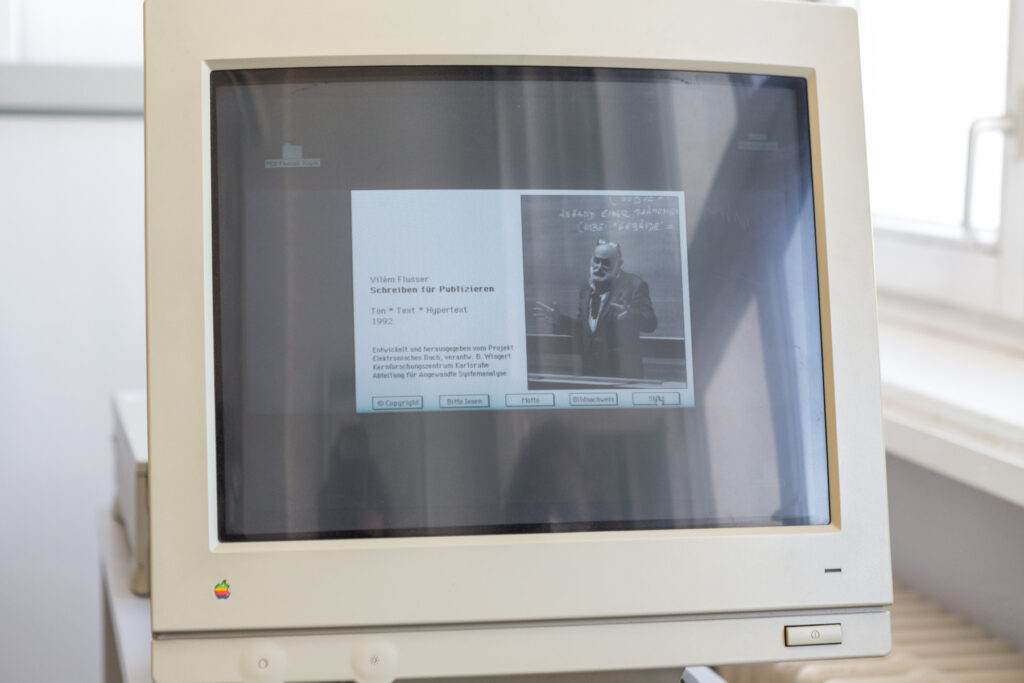
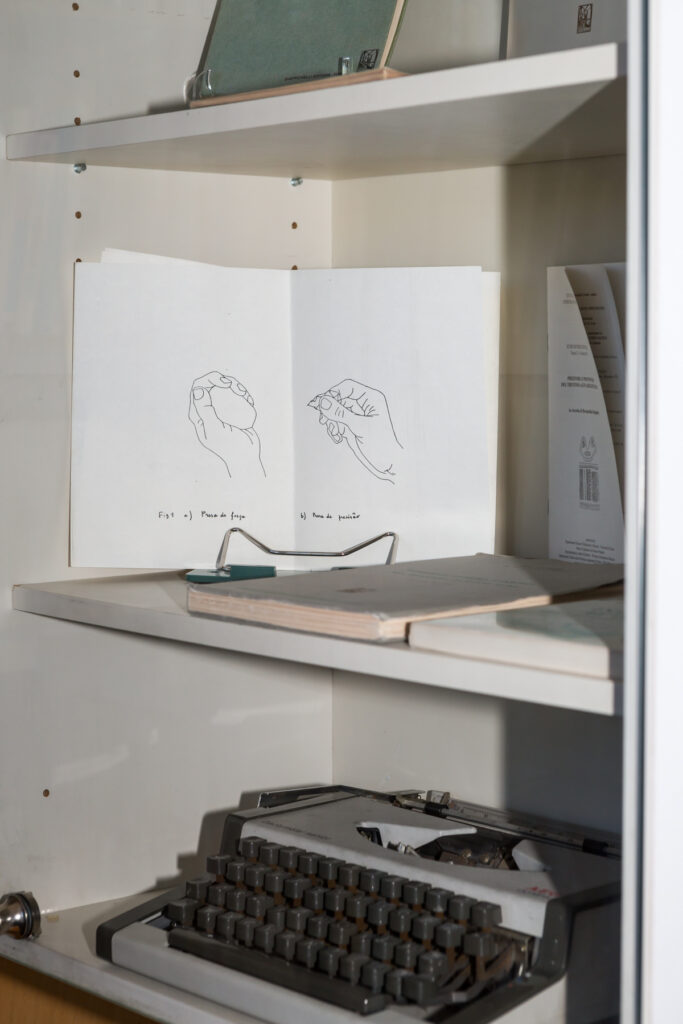
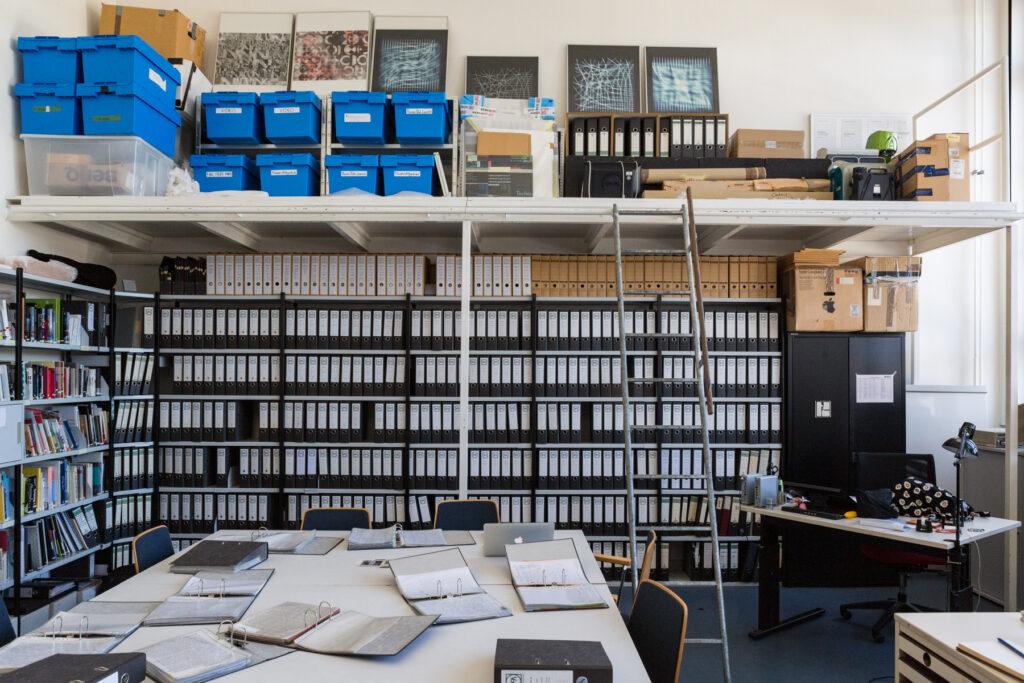
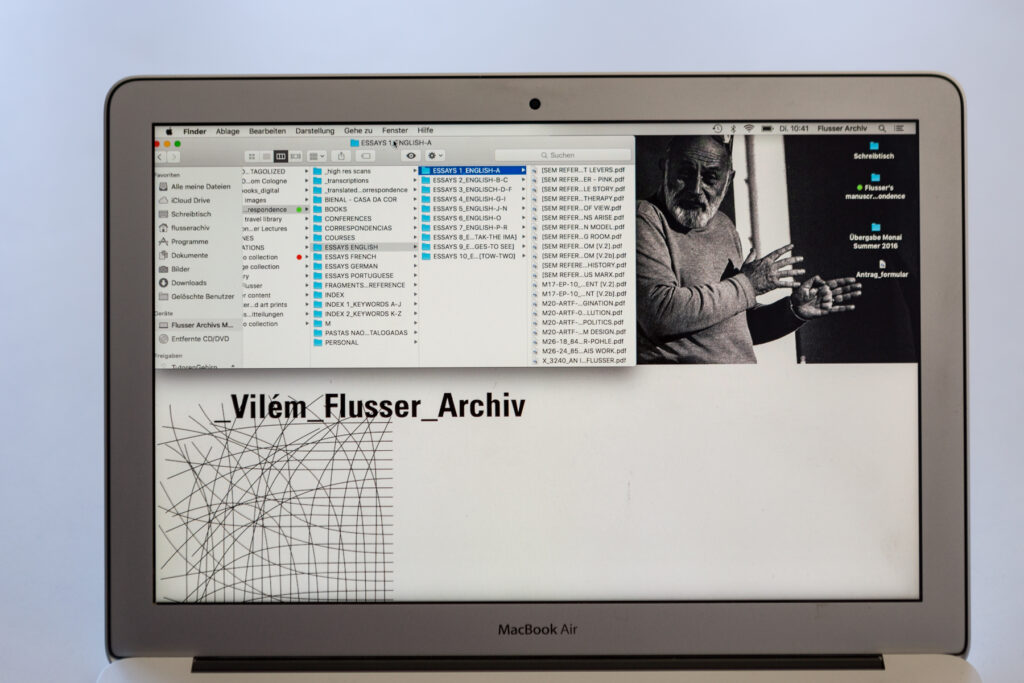
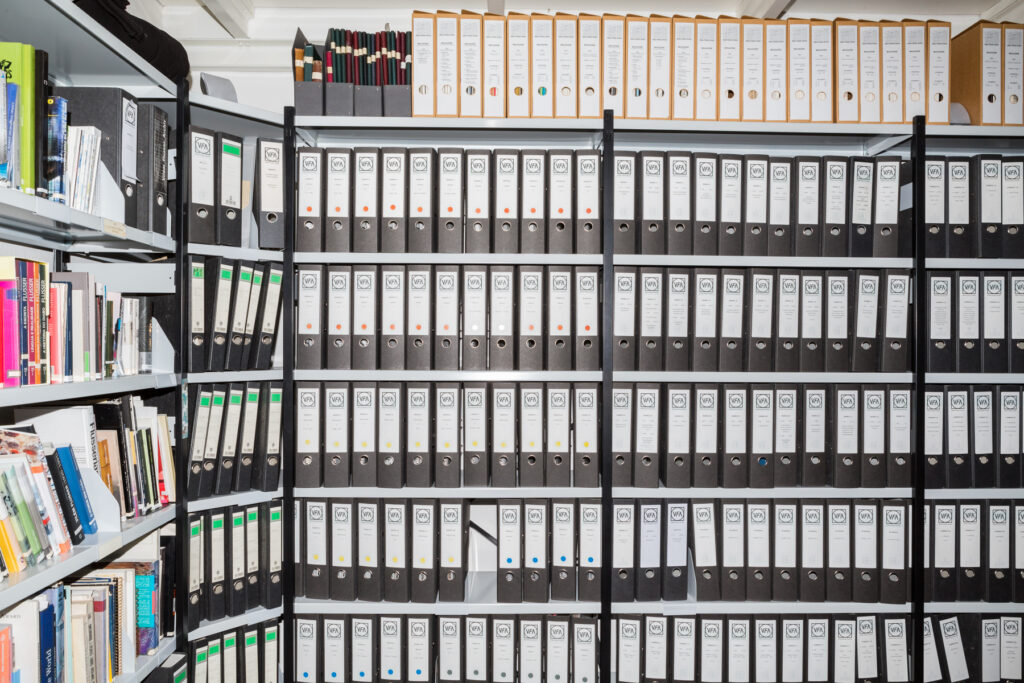
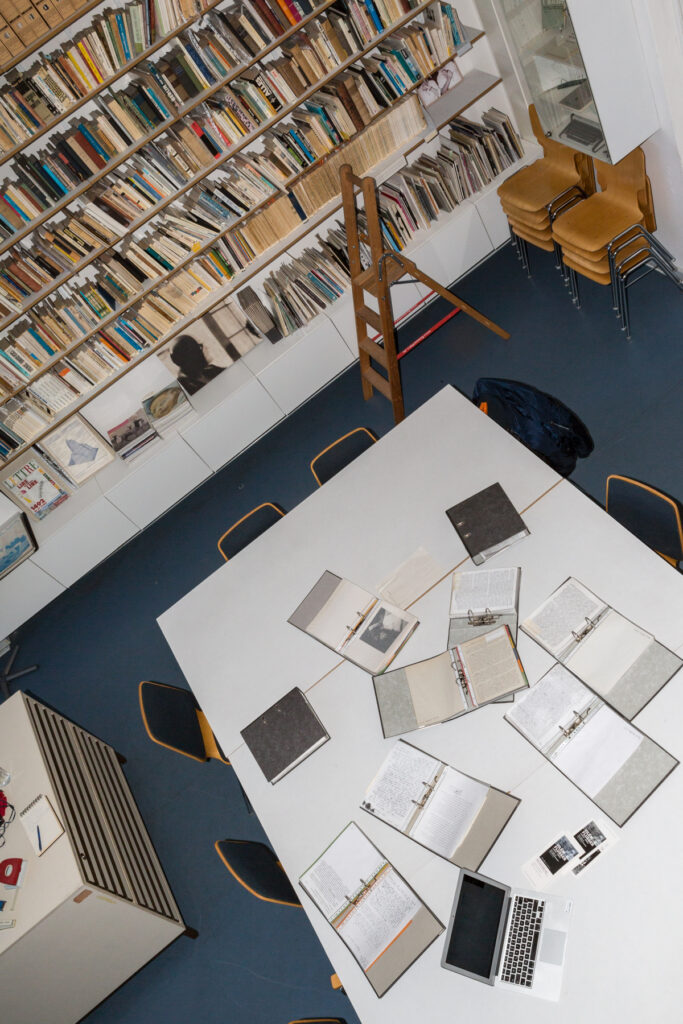
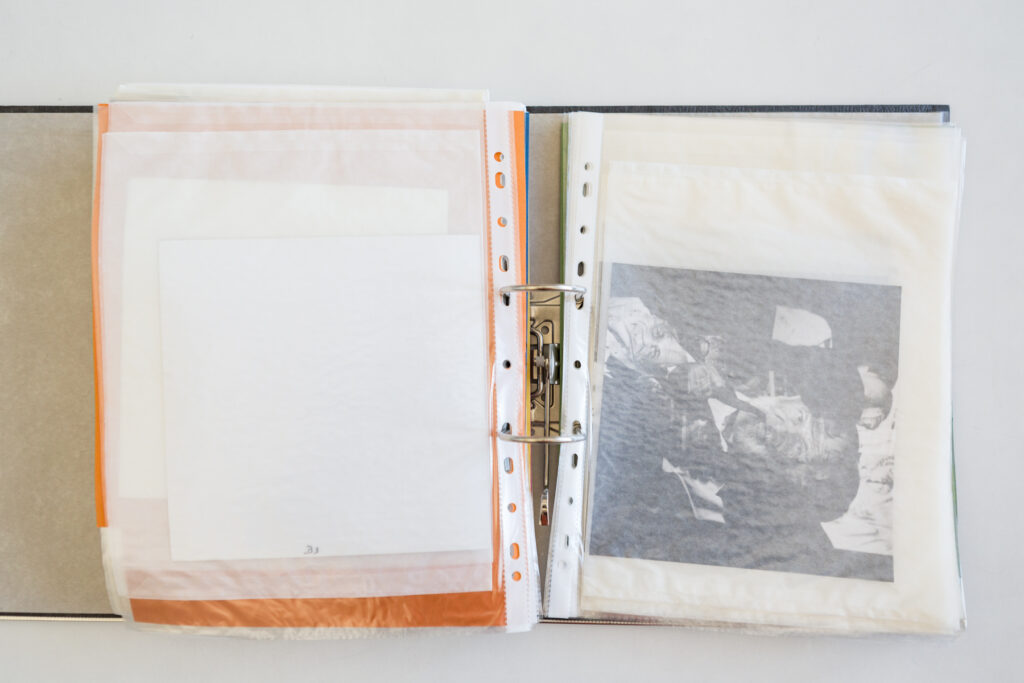
Siblings and Symbols
The process and practice of digitization is of particular interest in the case of Vilém Flusser’s legacy. Whilst the Berlin archive holds digital copies of the already photocopied manuscripts (whose originals as well as directly digitized manuscripts are part of the archive in Cologne), the “mirror” collection in São Paulo holds entirely digital copies. The content of the core collection and the actual text materials are said to be identical at all three locations.
A “digital twin” does not substitute but seemingly parallelize its original, aiming to provide (at least) the same information, bringing to mind of Flusser’s sentences: “Fiction pretends, very often, to represent facts by substituting for them or pointing at them. (…) [t]hrough symbols. Symbols are things that have by convention been appointed as representatives of other things. (…) The things which symbols represent are their meaning” (Flusser 2002, 27) leaving us wonder if the mirrored archive therefore could be understood as a symbol of what results to be identified as the main or base archive.
On a level of finer resolution, a daring figure of thought unfolds: What we do not want to call copies, are they images? How do we read them?
Still it seems to be far less fruitful to investigate “originals” than to construe the locations that host and archive Flusser’s work in one form or another, establishing a kind of distributed memorial that provides global access whilst researching locally in parallel. Additionally, the “mirror” collection in São Paulo introduces a certain terminological allure.
A mirror cannot but react.
Whatever is newly digitized in Berlin will be transmitted to São Paulo as well, and findings are planned to be shared. A dialogue that brings us back to the table, our desktop, where we gather, exchange, reflect, mirror, and learn from each other.
Towards a Mirroring Glossary
Vilém Flusser’s archive can be imagined as a hall of mirrors activating and hybridizing a different set of binaries: in-between the private and the public sphere, the individual and the collective, the palpable and the virtual, the analogue and the digital, the image and the word, the “line” and the “surface” (after Flusser’s key discrimination between “surface thought” and “line” thought [Flusser 2002]) emerges a reflexive and reflective methodology. We are prompted to read, lemmatize, mangle and reuse the concepts he has coined, investigating how his body of work resonates with (or else, mirrors) burning issues in thinking about and with different archives for the future. This attempt towards the compilation of an invented glossary is a gesture of interpretation, mimicry, and (as such) appropriation, aiming at unlearning canonical conceptions of the archive and steadily informed by what Flusser frames as theory as technology: an all-directional process that, in Flusser’s words, “also changes its meaning. It no longer denotes the contemplating of fixed, unchanging ideas but active modeling. It dialectically opposes observation, on the one hand, and experiment, on the other” (Flusser 2002, 86).
Imageism: An irreverent method of inquiry based on the assertion that the structure of culture has undergone fundamental shifts following the invention of linear writing – in the second millennium BC – and the more contemporary invention of “technical images.” In this progression, texts, like images, are mediations of the world and human beings; texts explain images, yet images also illustrate texts. Imageism holds that the relationship between these two inventions is a crucial question for history; and that the space and time peculiar to the image is “none other than the world of magic” (Flusser 2000, 9). In contrast to the linear (textual) world of history, the world of image is one in which everything is repeated. In scanning an image, our gaze takes in different elements, producing temporal relationships between them. A satellite image taken at the outskirts of an airport reveals an empty tarmac, a line of cars, and a mass of people crowding by the main gate. Scanning back and forth between these elements, what relationships do we create? And how are we to decode these technical images, which increasingly structure our reality?
Surfile: A field of reasoning defined by a double method of synthesis and analysis, where a two-dimensional surface no longer contains one-dimensional lines, but multidirectional containers/mini-repositories of signs and meanings: How do we read an image whose grid-like surface resists its two-dimensionality? How does the hidden depth of this new surface enclose and imprint the deep time of media (and media theory)’s development? (Zielinski 2006). Etymologically referring to the hybrid of the words ‘surface’ and ‘file,’ but also alluding to the French word for the overcast stitch (to surfile is to make a type of stitch that protects the rough edges of a cut piece of fabric from its unraveling), it reminds us of the relation between text and textile (Flusser 2011), as a necessarily unfinished, elliptical process, calling for completion.
Techno-imagined Communities: “The purpose of images is to mean the world, but they may become opaque to the world and cover it, even substitute for it. They may come to constitute an imaginary world that no longer mediates between man and the world, but, on the contrary, imprisons man. Imagination no longer overcomes alienation, but becomes hallucination, or double alienation” (Flusser 2002, 65). If to “techno-imagine” is to recognize texts as mediations that no longer transmit the aura of ‘truth’ and awe, the only response to the “double alienation” described by Flusser might be a collective effort towards historical – and therefore necessarily archival – consciousness (following Benedict Anderson).
The glossary (yet another manifestation of archival thinking) can be enriched, expanded, and changed.
The visit to the Vilém Flusser archive was made possible thanks to Anita Jóri and Maren Hartmann. The photographic images were created by Laura Fiorio in May 2021.
This contribution is published in the framework of the Whole Life Academy as part of the workshop “Desktop Shortcuts”.
References
Vilém Flusser, Towards a Philosophy of Photography. Translated by Anthony Matthews. London: Reaktion Books, 2000.
Vilém Flusser, Writings. Edited by Andreas Ströhl and translated by Erik Eisel. University of Minnesota Press, 2002.
Vilém Flusser, “Texts.” Does Writing Have a Future?. University of Minnesota Press, 2011, pp. 37–46. JSTOR, www.jstor.org/stable/10.5749/j.cttttfvw.9, accessed 26 Aug. 2021.
Anita Jóri & Alexander Schindler, “Archiving Flusser.” Flusser Studies 24(1), 2017, pp. 1–18.
Siegfried Zielinski, Deep Time of the Media: Toward an Archaeology of Hearing and Seeing by Technical Means. Translated by Gloria Custance. MIT Press, 2006.
Connected Material
A conversation on compulsive archiving in relation to a private archive of press photography on Liberia.
Schaber’s contribution revisits her 2004 work culture is our business and considers the complex issues around these three agencies. At stake in these differences are how the image’s story should be told, and how this telling is embedded in the viewing and understanding of history.
An aural and visual essay that overlays several journeys, a sensory one that attempts to evoke a perceived time, place or geography through the mapping of territories, and a narrative one materialized as a speculative epistolary correspondence between the present and the future that continuously summons the past.
Archives are often perceived as somewhat static. They look back, they conserve, they remember. But the thinking that was present in the pieces of the Pinkus Archive all addressed ecology, extinction, and political agency in ways that not only extend into our present, but into our future.
This essay explores the plural notion of “ethnofuturisms” by employing a comparative approach. The cultural and political vicissitudes of “futurist” tropes are traced in literary and audiovisual creations that engage with the national, ethnic, and/or racial contexts of the Middle East, African diaspora, East Asia, and former Eastern Bloc.
Chto Delat’s installation Canary Archives employs the imagery of the canary in the coal mine, once used to alarm miners when carbon monoxide levels rose. Where is the canary today, that tells us wether the danger is real? It seems to have gone silent, the sharpest signal it can send. In an emergency newspaper issue under the impression of the Russian war on Ukraine, Chto Delat assembles anti-war views of artists and critics and expresses their solidarity with the Ukrainian people.
A conversation about KANG Sang-woo’s film KIM-GUN and how it treats historical evidence and testimonies as a ‘horizon of contingent truths’ with the potential to be pieced together in alternating ways, touching upon the complex dynamics of archives and life stories, collective memory and amnesia, the mechanisms of image-making and history-writing.
The legacy of anti-colonial leader and Pan-Africanist revolutionary Amílcar Cabral (1924-1973) still calls for cultural readings, and not strictly political ones. Contemporary art, so-called “artistic research” and critical theory will benefit from a cross-disciplinary approach which puts Cabral as relevant to art or which turns Cabral’s many contributions into tools.
Three videos are used in real time composition to explore the combination of the moving images – the edited sequence creates a non-existing-place.
The audio map “biography of kecak” is an attempt to decrease this discrepancy between the singularity of archival knowledge and the multiplicity of individual realiities – using the sonic as its material.